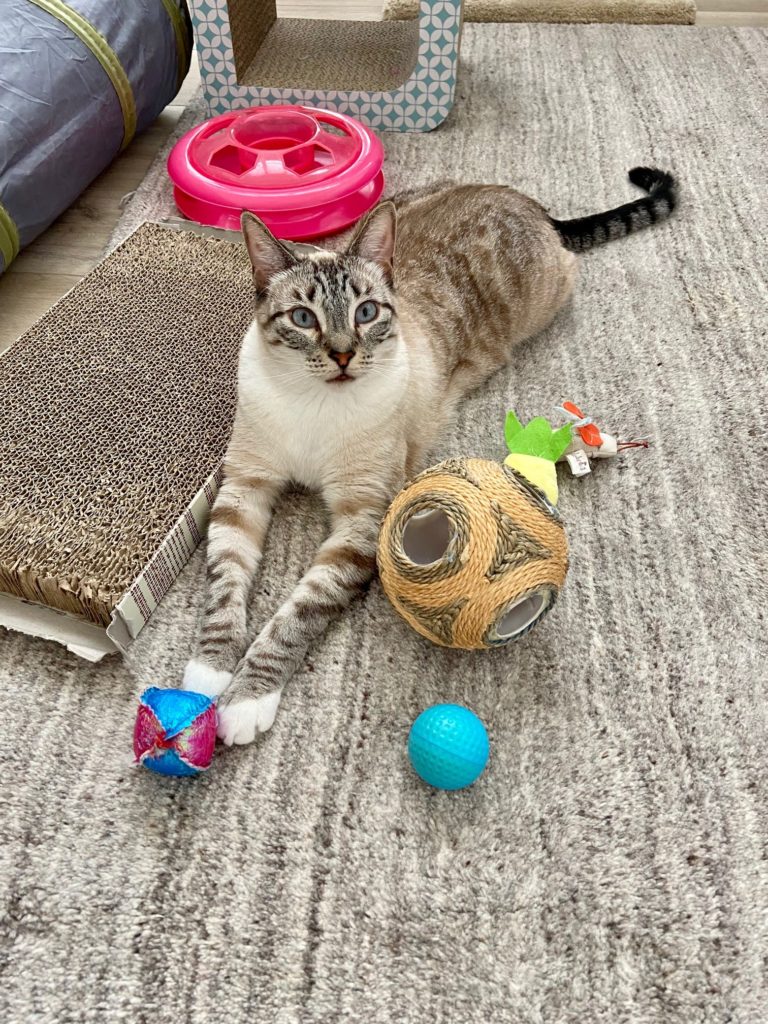VetStem Cell Therapy Helps Cat with Gingivostomatitis
We’ve talked about treating feline gingivostomatitis with VetStem Cell Therapy a few times on this blog. But sometimes we need more than just the science to describe how this treatment can potentially help cats. So this time, we will share a success story. Finn is a Siamese cat with gingivostomatitis who experienced an improvement in his symptoms after treatment with VetStem Cell Therapy.
Gingivostomatitis Symptoms
At just five months old, Finn was diagnosed with gingivostomatitis. Gingivostomatitis is a debilitating condition characterized by chronic inflammation of the affected cat’s gums. It can be very painful and lead to inappetence, reduced grooming, and weight loss. Unfortunately, there is no cure for this disease. Common treatments include lifelong medical management with antibiotics, steroids, pain medications, and/or full mouth teeth extractions.
VetStem Cell Therapy for Gingivostomatitis
Current literature supports the notion that gingivostomatitis is an autoimmune disease. Mesenchymal stem cells have demonstrated the ability to migrate to areas of inflammation, down-regulate inflammation, modulate the immune system, stimulate neoangiogenesis (formation of new blood vessels), and repair damaged tissue. Additionally, a recent clinical study demonstrated that intravenous administration of adipose (fat) derived stem cells could ameliorate the clinical signs of gingivostomatitis. While more research is needed, preliminary results suggest that VetStem Cell Therapy can improve the symptoms of some cats with gingivostomatitis.
Finn’s Treatment with VetStem Cell Therapy

Finn’s owners tried several medications in an effort to improve his symptoms, but nothing worked. They were determined to not have all of his teeth extracted and were willing to do whatever it took. His veterinarian recommended treatment with VetStem Cell Therapy and just shy of his first birthday, Finn received stem cell therapy.
To begin the process, fat was collected from Finn’s abdomen during a minimally invasive anesthetic procedure. The fat was sent to the VetStem processing laboratory. Lab technicians processed his fat to extract and concentrate his stem and regenerative cells and Finn received one intravenous injection of his own cells. Approximately four weeks later, Finn received a second intravenous dose using some of the stem cells banked from his initial fat collection.
According to his owners, Finn responded well to the treatment. His owner stated, “[the stem cell treatment] seemed to improve and maintain his condition especially over time so that Finn is happy, healthy, and living a great life. We plan to administer cells every year or so to keep his condition manageable and hopefully keep him healthier too.”
If your cat has gingivostomatitis, speak to your veterinarian about the possibility of treatment with VetStem Cell Therapy. Or contact us to receive a list of VetStem providers in your area.
